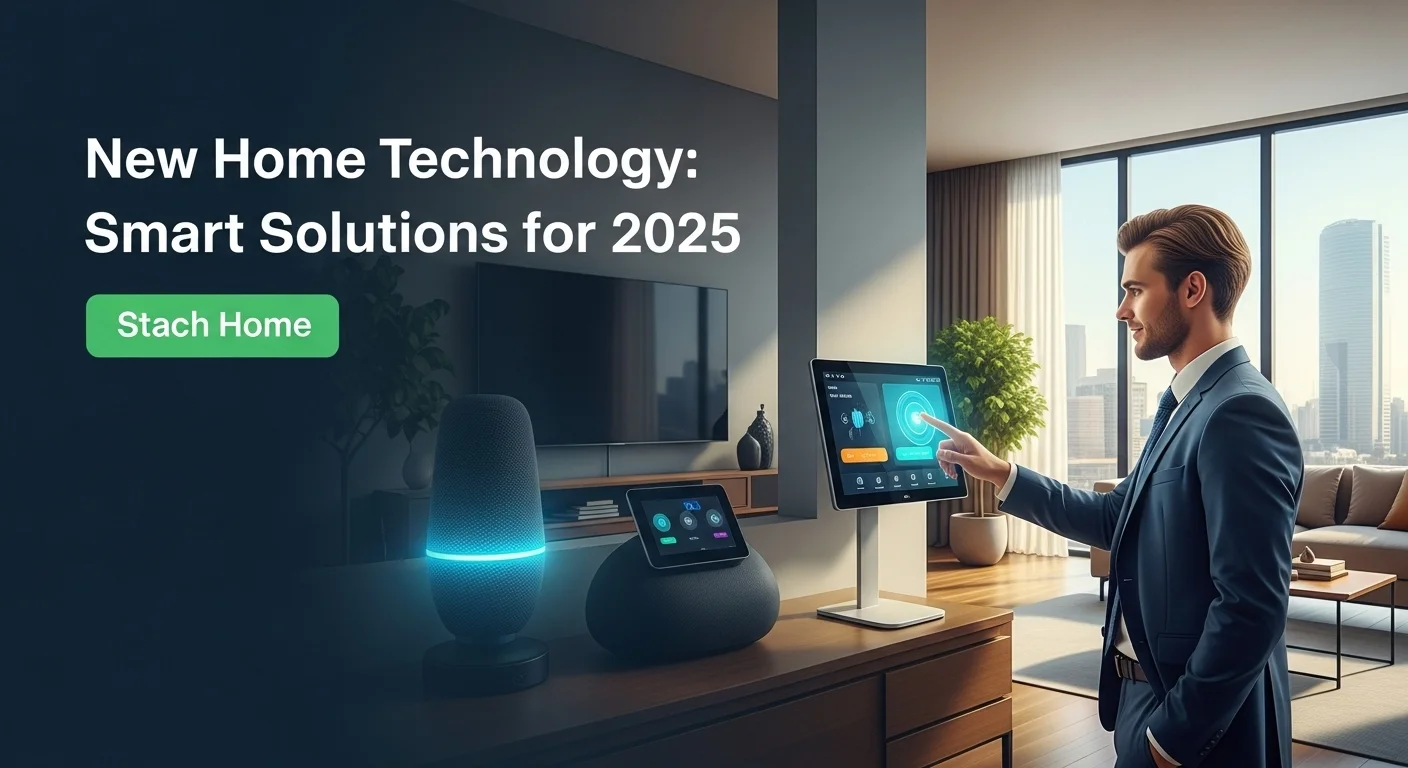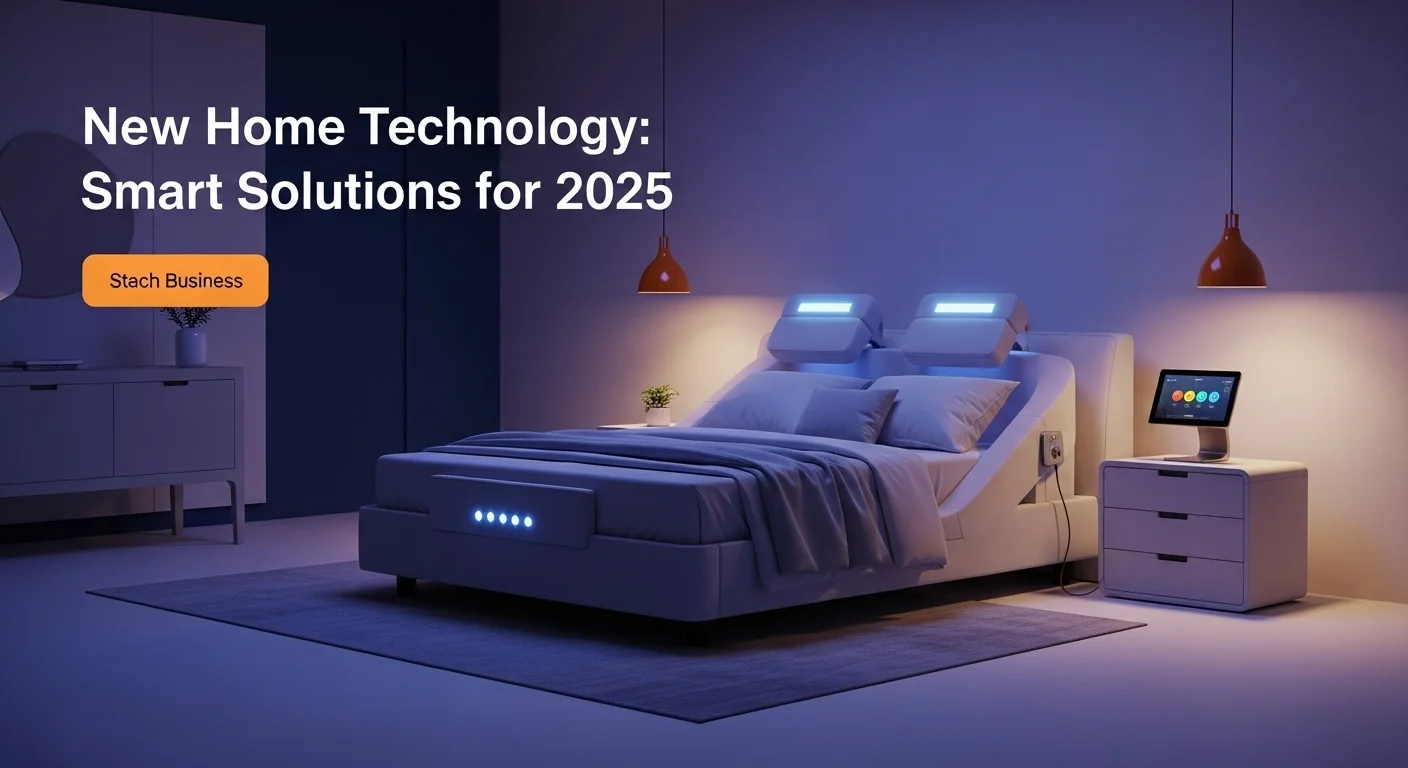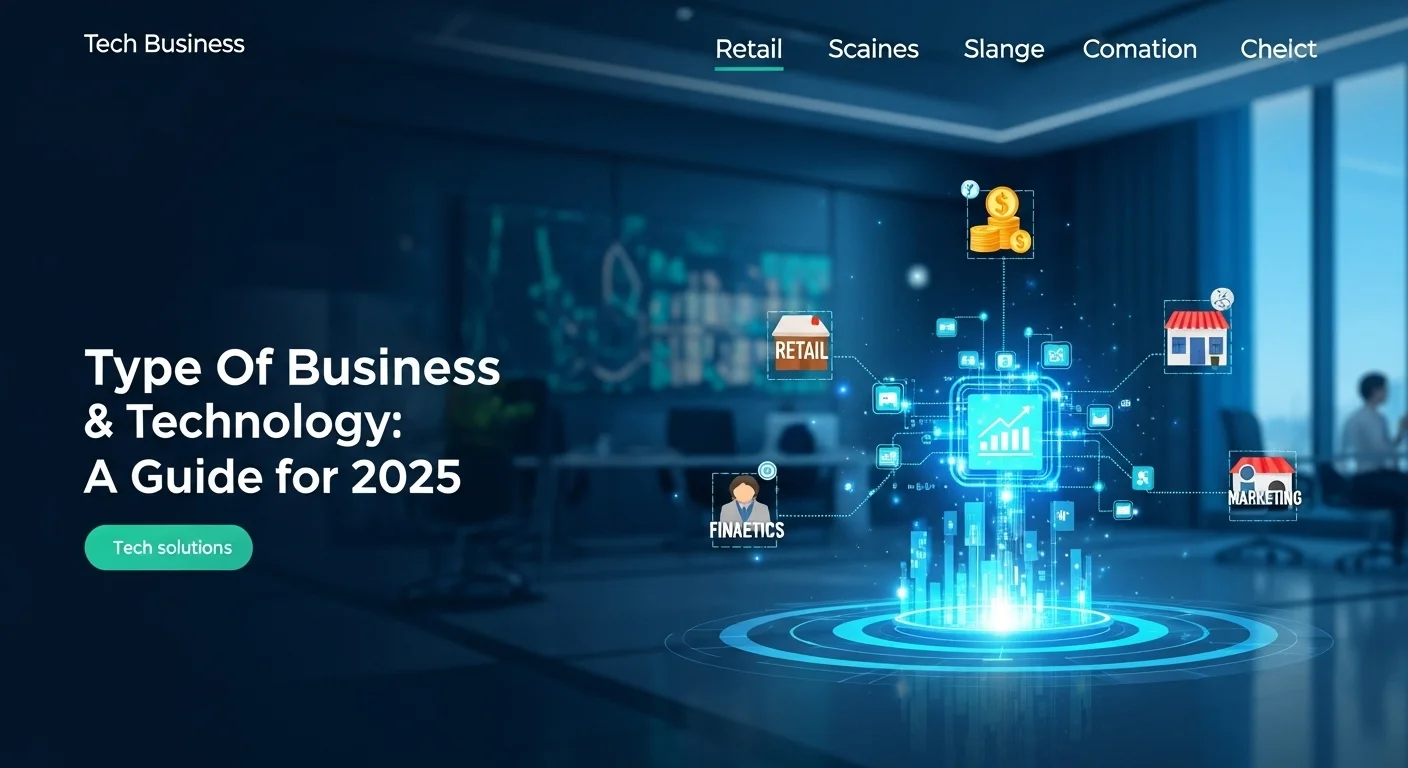Beyond the Walls: Your Personal Guide to Smart Home Tech for 2025

Executive Summary
I've been wiring homes for smart technology for over a decade, and the change has been incredible. What used to be a clunky set of remote controls has blossomed into a seamless ecosystem that truly makes life easier. A 'new home' today isn't just about fresh paint; it's about intelligent design. This article is my personal guide for you. We'll explore what makes a home truly smart, from the hidden wiring that makes it all work to the exciting devices you can use. We'll also dive into the booming business side of things, looking at real opportunities for 2025. Whether you're planning your dream home or your next business venture, this is your starting point for understanding the future of living.
Table of Contents
Table of Contents
What Exactly is a Modern Smart Home?
Let’s get one thing straight: a 'New Home' in today's world means so much more than just new construction. It's a living, breathing space that anticipates your needs. We've moved past the novelty of a few smart plugs. We're now talking about a fully integrated ecosystem of devices, all working together in the background. Think of it less as a house with gadgets and more as a responsive partner in your daily life. The real magic happens when this technology is woven into the very fabric of the home from day one. I've seen firsthand the headaches of trying to retrofit an old house; it's a world of compromises. A new construction smart home system is planned from the blueprint stage. This means having the foresight to run Ethernet cables for rock-solid internet, place outlets for automated blinds, and strategically position sensors. This groundwork is what allows a central new home automation system to act as the home's brain, coordinating everything flawlessly and invisibly.
So why is this so important for the world of tech? Because the home is where technology proves its real-world value. The demand for convenience, better security, and energy savings is pushing tech companies to innovate faster than ever. This friendly competition is why we have incredible new home automation devices that are becoming standard. A smart thermostat that learns your routine isn't a luxury anymore; it's a practical tool that saves you money. Intelligent lighting that adjusts to the time of day can improve your mood and sleep. This is technology with a tangible, positive impact. On the flip side, all these connected devices generate a huge amount of data. While we must be vigilant about privacy and security, this data allows AI to create truly personalized experiences, like your house knowing to brew coffee when your alarm goes off or warning you that the washing machine needs maintenance before it breaks down.
This shift has also kicked the door wide open for entrepreneurs. The demand for smart home expertise has created a wave of new home business ideas. I've seen skilled professionals build successful companies just by helping people design and install these complex systems. Security, in particular, is a goldmine. As our homes get smarter, they also become targets. This has created a huge need for specialists who can lock down home networks and protect families from digital threats. Looking toward 2025, the business opportunities will get even more exciting. Imagine services that use AI to manage your home's energy, automatically selling your solar power back to the grid when prices are high. Or health and wellness services that adjust your home's environment based on data from your fitness tracker. The 'New Home' is more than a building; it's a platform for the next generation of technology and services, making our lives better while creating a thriving new sector of the economy.

A Practical Guide to Smart Home Tech & Business
Jumping into the world of smart homes can feel overwhelming, but it boils down to two things: a solid foundation and the right tools. Whether you're a homeowner dreaming of an automated paradise or an entrepreneur looking for an opportunity, this is what you need to know. The heart of any truly smart home is a well-planned new construction smart home system. Trying to add complex tech after the walls are up is like performing surgery with a butter knife—messy and ineffective.
Getting the Infrastructure Right: The Unseen Magic
I can't stress this enough: what's behind the walls is more important than the shiny devices you see. While Wi-Fi is great, nothing beats a hardwired Ethernet connection for reliability and speed, especially for your home office or entertainment center. A professional plan includes running these cables alongside low-voltage wiring for speakers and sensors. You'll also want to plan for a central hub—a dedicated closet where your router, switches, and the brain of your new home automation system can live, keeping everything cool, organized, and out of sight. Finally, think about power. It's not just about outlets in the walls anymore. A new build lets you put power exactly where you need it for specific new home automation devices, like inside a cabinet for a smart appliance or near a window for automated blinds.
Choosing Your Team: The Devices and Ecosystems
Once the foundation is set, you can pick your players. The smart home field is dominated by a few big ecosystems like Amazon Alexa, Google Home, and Apple HomeKit. Your choice here will guide which devices you buy. The good news is that a new standard called Matter is making it much easier for devices from different brands to talk to each other, which gives you more flexibility. When it comes to devices, think about the problems you want to solve:
- Comfort: Smart thermostats (like Nest or Ecobee) learn your patterns to save energy, while smart vents can create different temperature zones in your house.
- Ambiance & Security: Smart lighting (like Philips Hue) lets you schedule lights, change colors, and even make it look like you're home when you're away.
- Peace of Mind: This is a huge one. Smart locks, video doorbells, and security cameras with AI that can tell the difference between a person and a package are becoming essential.
- Entertainment & Convenience: Imagine your whole-home audio and video controlled by your voice, or a smart fridge that helps you with your grocery list.
Solving Problems: Where the Business Opportunities Lie
All this technology creates real needs, and where there are needs, there are new home business ideas. The complexity alone is an opportunity. I've seen great businesses thrive by offering expert consultation and installation services, becoming the go-to integrators who make sure everything just works. Here are some other areas I see booming:
1. Smart Home Security Specialist: As I mentioned, smarter homes need smarter security. A business that focuses on securing networks, auditing devices for vulnerabilities, and offering peace of mind as a service is a fantastic niche.
2. Custom Automation Programmer: For clients who want the best, you can create bespoke 'scenes'. For example, a 'Good Morning' scene that slowly raises the blinds, fades up the lights, starts the coffee maker, and plays a favorite news podcast with a single command.
As we look to 2025 and beyond, the ideas will be powered by AI. Think about a business offering 'Predictive Home Maintenance', where AI analyzes device data to schedule a repair before something breaks. Or a wellness service that adjusts the home's lighting and air quality based on data from your fitness tracker. The opportunities are moving from just installation to providing intelligent, ongoing services that redefine what a home can do for us.

Pro Tips for Your Smart Home Journey
Making your smart home work for you is about more than just technology; it's about strategy. Whether you're living in it or building a business around it, here are some of my hard-won tips to help you get the most out of your investment.
For Homeowners: My Best Advice for a Happy Smart Home
1. Don't Treat Tech as an Afterthought: This is the golden rule. Bring a smart home specialist into the conversation with your architect and builder from day one. I've seen too many people try to add tech later, only to be limited by existing wiring. Planning your new construction smart home system early saves you money, time, and a world of frustration.
2. Your Network is Everything: A cheap router is the fastest way to a frustrating smart home experience. Invest in a quality mesh network to blanket your home in strong Wi-Fi. And for anything that doesn't move, like your TV or work computer, a wired Ethernet connection is always the superior choice.
3. Be a Security Hawk: A common mistake I see is leaving the default passwords on devices. It’s like leaving your front door unlocked. Change every password to something strong and unique. A pro tip: set up a separate 'guest' Wi-Fi network just for your smart home devices. This way, if a hacker manages to compromise a smart lightbulb, they can't access your personal computer or files.
4. Embrace Flexibility: While it’s tempting to go all-in on one ecosystem, look for devices that support interoperability standards like Matter. This future-proofs your investment and stops you from being locked into a single brand for every new device you buy.
5. Automate with Purpose: You don't have to automate every single thing on day one. Start with automations that provide real value. Have your lights gently turn on as you arrive home. Have everything shut down when you say 'Goodnight'. Master these simple routines with your new home automation system, and you'll discover what you truly want and need over time.
For Businesses: Strategies for Winning in the Smart Home Space
If I were launching a business today, here's how I'd approach it to build one of the next successful new home business ideas:
1. Find Your Niche and Own It: Don't be a jack-of-all-trades. Become the undisputed expert in one area. Maybe it's luxury home cinemas, cybersecurity for homes, or creating amazing smart homes for elderly clients to help them live independently. Specialization is your most powerful marketing tool.
2. Partner Up: The best time to sell a smart home is before it's built. Build strong relationships with local builders, architects, and designers. Offer them a partnership where your services become a seamless, high-value upgrade for their clients. This creates a reliable pipeline of projects.
3. Think in Subscriptions: One-time installation fees are good, but recurring revenue is better. Offer service packages that include remote monitoring, security updates, and premium support. Looking at new home business ideas 2025, these subscriptions could evolve into AI-powered energy management or predictive maintenance, creating lasting value and customer loyalty.
4. Be the Teacher: This technology can be complex and intimidating for many. Position your business as a trusted guide. Run workshops, create simple video tutorials, and speak in plain English. An educated customer understands the value you provide and is more likely to invest further and recommend you to others.
5. Build on the Cloud and with AI: The future is remote management and intelligence. Use cloud platforms to efficiently monitor and manage your clients' systems from anywhere. Explore how AI can differentiate your service. An AI-powered security system that offers smarter alerts is far more valuable than a standard one. This approach allows you to scale your business and offer truly cutting-edge solutions.
Expert Reviews & Testimonials
Sarah Johnson, Home Builder ⭐⭐⭐⭐
As a builder, I found this guide incredibly insightful. The breakdown of business opportunities gave me some solid ideas for value-add services to offer my clients. A bit more on project costing would have made it perfect.
Mike Chen, IT Consultant ⭐⭐⭐⭐⭐
A great overview of the current smart home landscape. As an IT guy, I appreciated the emphasis on robust network infrastructure – something most articles gloss over. It's a solid read for anyone getting into home automation.
Emma Davis, Tech Entrepreneur ⭐⭐⭐⭐⭐
Finally, an article that connects the dots! The seamless flow from homeowner tech to business strategy is brilliant. This is a must-read for anyone serious about smart home technology. I've already shared it with my team.



